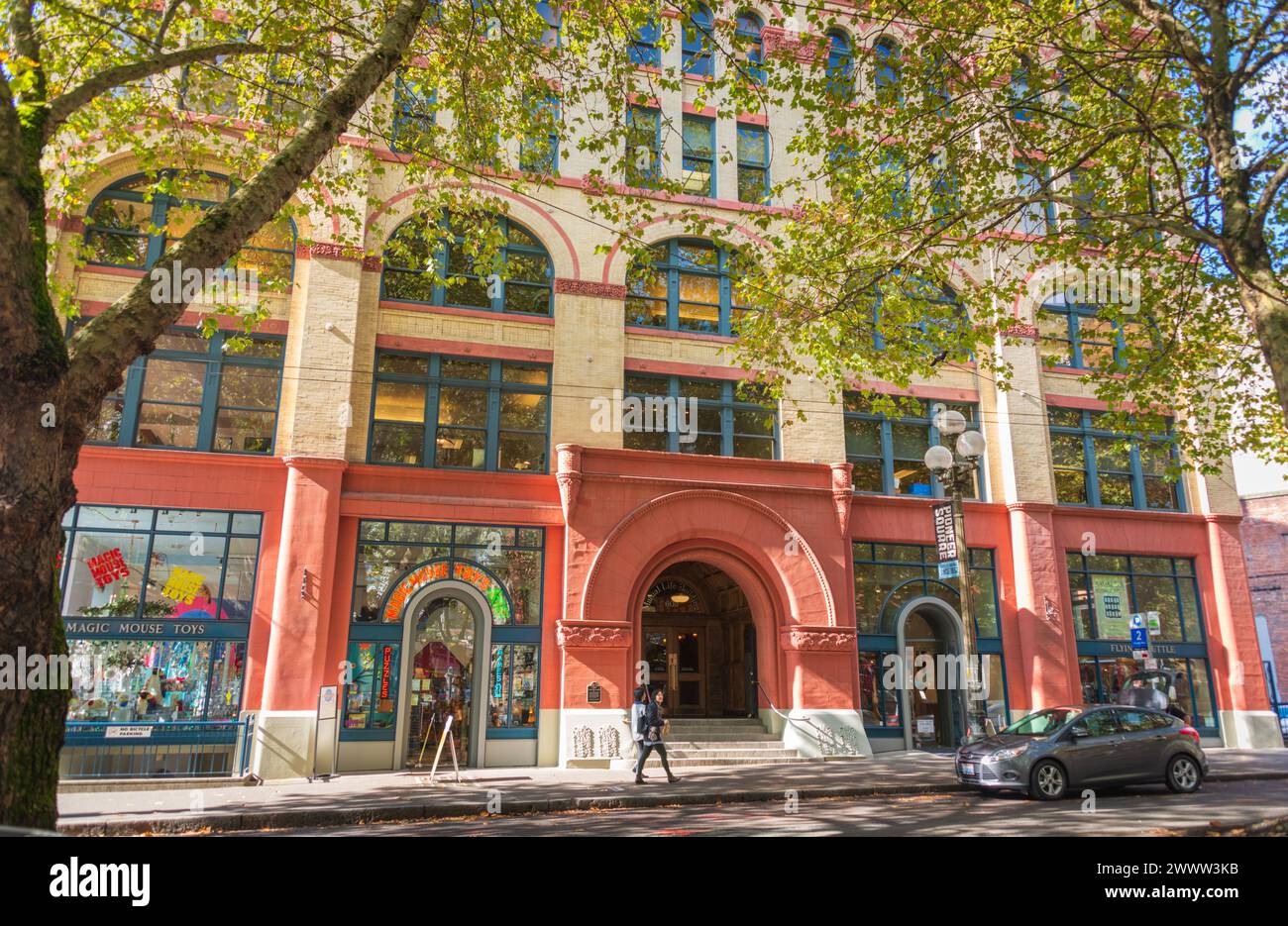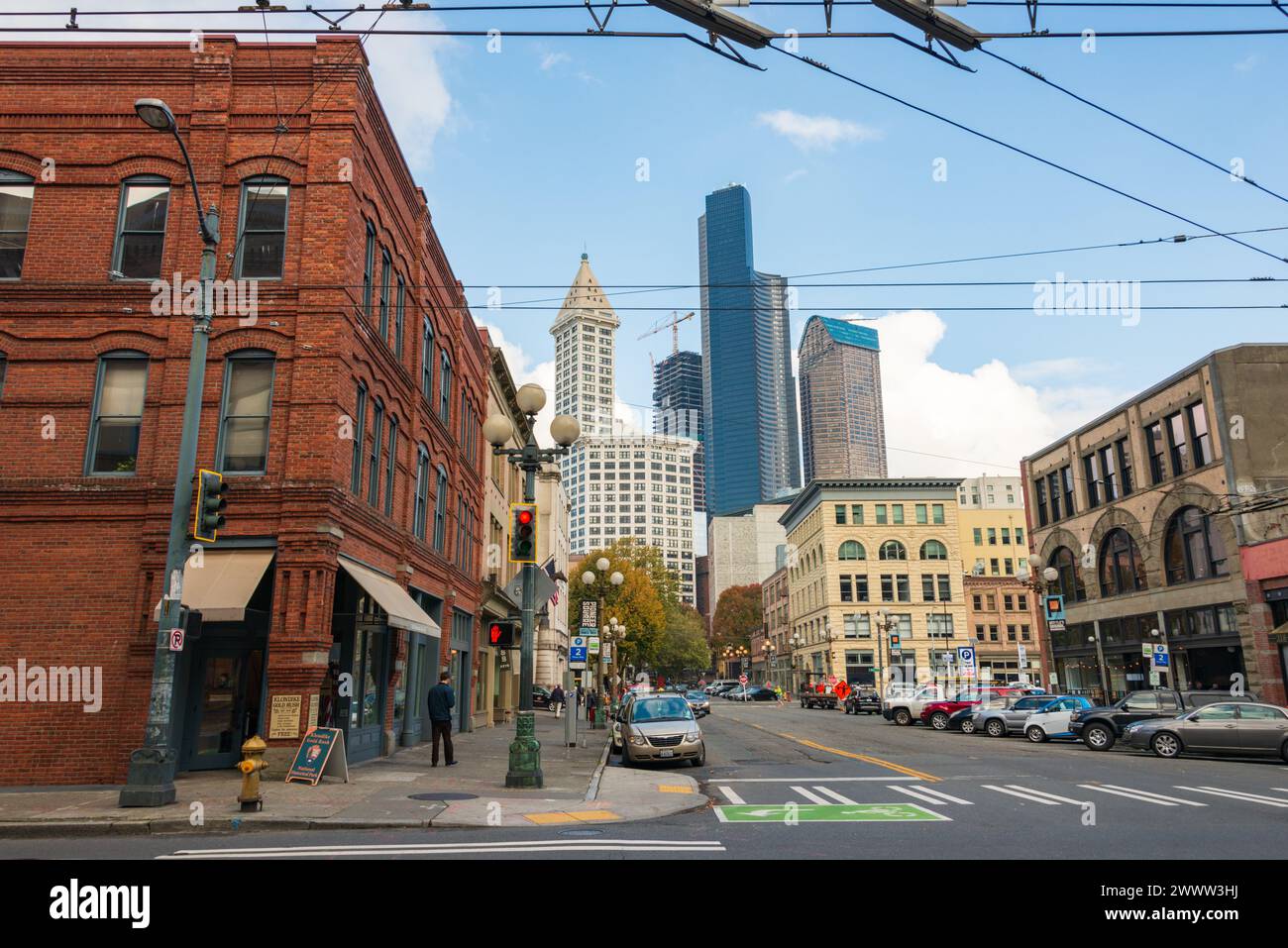
The Golden Gateway: How the Klondike Gold Rush Forged Seattle’s Destiny
On a sweltering Saturday morning, July 17, 1897, a ripple of excitement turned into a tidal wave of hysteria as the steamship Portland docked at Seattle’s Schwabacher Wharf. From its decks, a stream of bedraggled prospectors disembarked, their weary faces etched with the trials of the unforgiving north. But it wasn’t their appearance that captivated the throngs gathered; it was the heavy sacks they clutched, overflowing with an estimated one ton of gleaming gold. The headline that screamed across the front page of the Seattle Post-Intelligencer that day would forever change the city’s trajectory: "GOLD! GOLD! GOLD! Sixty-Eight Rich Men on the Steamer Portland."
This single event ignited the Klondike Gold Rush, an epic saga of human ambition, endurance, and desperation. While the gold lay buried deep in the frozen soil of Canada’s Yukon Territory, thousands of miles north, it was Seattle, Washington, that strategically positioned itself to become the indispensable "Gateway to the Klondike," a role that would transform a struggling frontier town into a bustling metropolis and forever imprint a golden hue on its identity.
The Spark in a Time of Gloom

The arrival of the Portland could not have been more perfectly timed. America was still reeling from the devastating Panic of 1893, a severe economic depression that had left millions unemployed and desperate for a new beginning. Seattle, a city built on timber and a burgeoning port, was not immune. Businesses struggled, and unemployment was rampant. The news of readily available gold, promising instant riches for the common man, acted as a potent elixir, offering hope where little existed.
The gold fever was instantaneous and infectious. Within hours of the Portland‘s arrival, shops closed as clerks and owners abandoned their posts, dreaming of fortunes in the Yukon. Farmers left their fields, doctors closed their practices, and even the city’s mayor, W.D. Wood, famously declared he was resigning to head north, shouting, "Seattle is the gateway to the gold fields! I’m going to the Klondike!" (He later reconsidered, perhaps realizing his greater potential in the city’s commercial boom.)
Seattle’s Calculated Grab for Glory
While the gold discovery was serendipitous, Seattle’s ascent as the primary outfitting center was anything but accidental. It was the result of a deliberate, aggressive, and remarkably effective marketing campaign orchestrated by astute civic leaders and businessmen. Seattle was locked in a fierce competition with other Pacific Northwest ports like San Francisco, Portland, and Tacoma, all vying for the lucrative outfitting trade.
Seattle’s Chamber of Commerce, under the shrewd guidance of figures like Erastus Brainerd, launched an all-out publicity blitz. They blanketed the nation with pamphlets, advertisements, and news stories, all extolling Seattle’s virtues as the most convenient, best-stocked, and cheapest place to prepare for the arduous journey. Their slogan was simple and direct: "Seattle: The Only Way to the Gold Fields."
Brainerd understood the psychology of the gold seeker. He played on their dreams, offering "Klondike outfits" and "reliable information" that often exaggerated the ease of the journey and the certainty of striking it rich. He even fabricated stories, such as a supposed prospector named "C.J. Marmion" who had found a massive nugget, purely to stoke the flames of excitement and direct it towards Seattle.
The "Ton of Goods" and the Boom
Seattle’s claim to being the best outfitting center wasn’t entirely unfounded. The city had several advantages. It boasted a deep-water port capable of handling large steamships, a nascent but growing industrial base, and established trade routes with Alaska. Crucially, it had a rapidly expanding retail sector, ready to meet the unprecedented demand.

The cornerstone of Seattle’s business model was the infamous "ton of goods" requirement. The Canadian North-West Mounted Police (NWMP), responsible for maintaining order in the Yukon, wisely mandated that every prospector entering the territory had to bring a year’s supply of food and equipment – approximately 1,150 to 2,000 pounds. This was to prevent starvation and ensure self-sufficiency in the remote, harsh environment.
This regulation was a godsend for Seattle. Thousands of hopefuls poured into the city, each needing to purchase an exhaustive list of supplies: flour, beans, bacon, coffee, sugar, dried fruit, tools (picks, shovels, gold pans), heavy wool clothing, boots, tents, sleeping bags, stoves, medicines, and even sleds and pack animals. Seattle’s downtown core transformed into a chaotic marketplace. Hardware stores, dry goods merchants, and grocers expanded their inventories overnight. New businesses sprang up daily, offering everything from "Klondike stoves" to "Yukon-proof" footwear.
The Bon Marché, a fledgling department store, quickly became a one-stop shop for prospectors, advertising "Miners’ Supplies of Every Description." Even Nordstrom, which would later become a luxury retailer, traces its roots to this era, with founder John W. Nordstrom arriving in Seattle in 1897 and working in a shoe store before making a modest fortune in the Klondike and returning to open his own shoe shop.
The wharves teemed with activity as goods were loaded onto steamships bound for the northern jump-off points of Skagway and Dyea in Alaska. Sailors, longshoremen, and teamsters found steady, well-paying work. Banks thrived as prospectors cashed in their life savings and obtained loans. Hotels were fully booked, and the city’s population swelled dramatically, nearly doubling in just a few years. Seattle was experiencing an economic boom unlike anything it had ever seen, all fueled by the distant promise of gold.
The Perilous Journey North
For those who purchased their supplies in Seattle, the journey was only just beginning. From Seattle, they boarded crowded, often uncomfortable, steamships for the approximately 1,000-mile voyage north to Skagway or Dyea, the Alaskan coastal towns that served as the gateways to the interior. Here, the real test of endurance began.
From these towns, stampeders faced two main routes over the Coast Mountains into the Yukon: the Chilkoot Trail and the White Pass Trail. The Chilkoot, a steep and treacherous ascent of over 1,000 feet in just half a mile near its summit, became infamous for its "Golden Stairs" – 1,500 steps carved into the ice, which prospectors ascended in single file, often carrying 50-70 pound loads on their backs, repeating the journey dozens of times to ferry their mandated ton of goods. The White Pass, while less steep, was equally brutal, known as the "Dead Horse Trail" due to the thousands of pack animals that perished along its muddy, boulder-strewn path.
It was a journey of immense physical hardship, bitter cold, disease, and often, disillusionment. While Seattle profited handsomely from equipping these adventurers, the reality for many was far from the golden dreams they harbored. Only an estimated 30,000 to 40,000 of the 100,000 who set out actually reached Dawson City, the heart of the Klondike goldfields. Even fewer found significant wealth.
A Lasting Legacy: Seattle Transformed
The Klondike Gold Rush lasted only a few short years, peaking in 1898 before news of dwindling returns and the immense hardships spread, deterring new waves of prospectors. By 1899, the rush was largely over, as easily accessible gold became scarce and larger mining companies moved in with more sophisticated, capital-intensive operations.
However, for Seattle, the end of the rush did not signal a bust. The city had undergone a profound and irreversible transformation. The wealth generated from outfitting the stampeders had been reinvested, solidifying Seattle’s infrastructure. New docks, warehouses, and transportation networks were in place. The influx of people, many of whom decided to stay, provided a skilled and ambitious workforce.
The Klondike Gold Rush firmly established Seattle’s identity as the primary commercial and transportation hub for Alaska and the Pacific Northwest. It cemented its reputation as a place of opportunity and innovation, a city that could capitalize on a sudden, dramatic shift in the economic landscape. The entrepreneurial spirit fostered during this period became a defining characteristic of the city, paving the way for future booms in industries like aerospace (Boeing), technology (Microsoft, Amazon), and coffee (Starbucks).
Today, the legacy of the Klondike Gold Rush is preserved and celebrated in Seattle. The Klondike Gold Rush National Historical Park, with its main unit located right in Seattle’s historic Pioneer Square, serves as a testament to the city’s pivotal role. Within its walls, visitors can trace the stories of the stampeders, view artifacts from the era, and understand how a distant gold strike shaped the destiny of a modern American city. The park’s interpretive center, housed in a beautifully restored brick building, is a poignant reminder of the hopes and struggles of those who chased a dream, and of the city that helped them on their way.
The "Golden Gateway" story is more than just a historical anecdote; it’s a foundational myth for Seattle. It speaks to the city’s resilience, its capacity for strategic vision, and its ability to turn a challenging situation into an unprecedented opportunity. The Klondike Gold Rush didn’t just bring gold to Seattle; it laid the very bedrock of its future, shaping its character as a city defined by ambition, commerce, and a relentless forward momentum. The echoes of "Gold! Gold! Gold!" still resonate in the streets of Seattle, a permanent reminder of the epic adventure that forged its soul.


